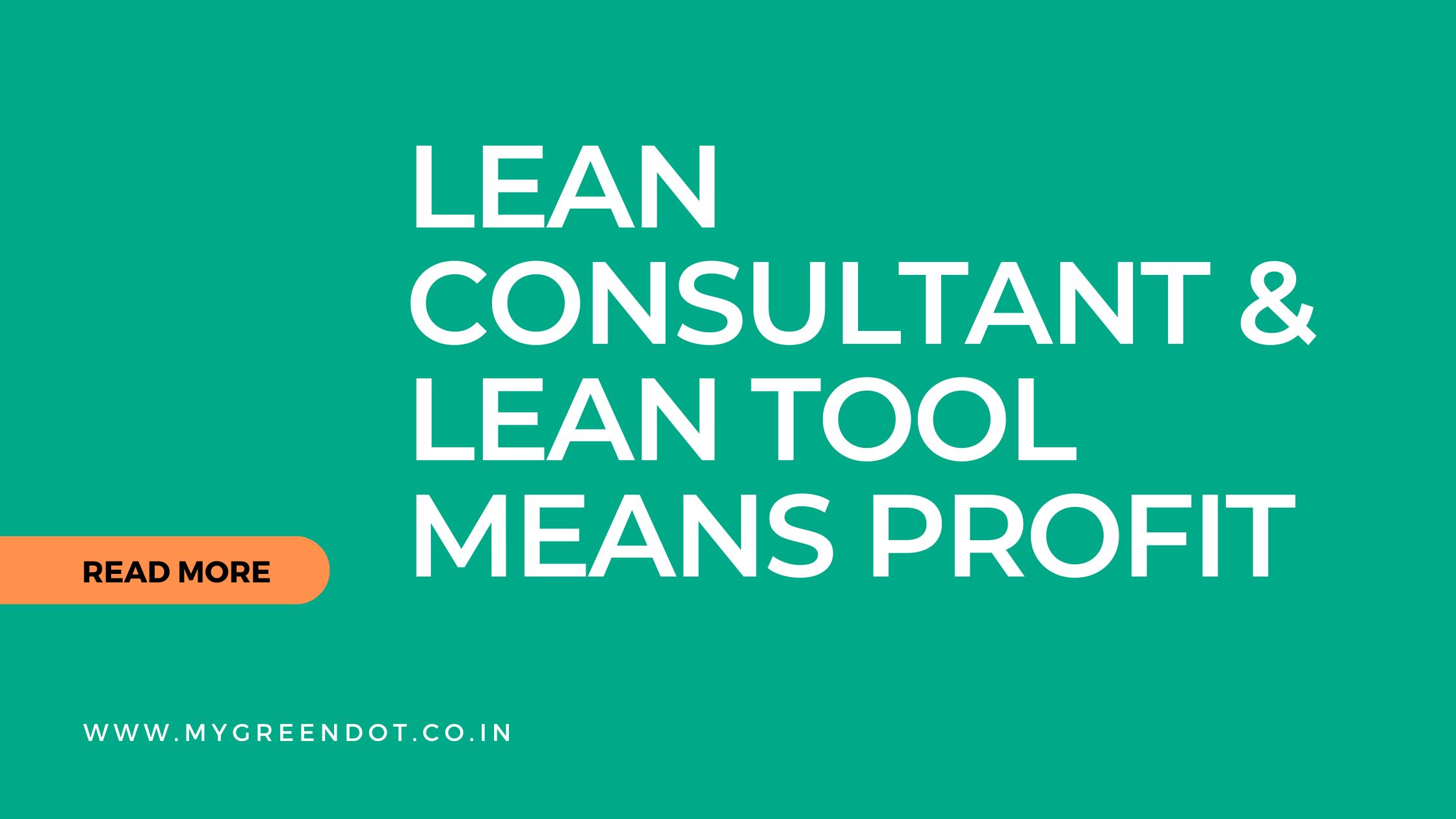What is the objective of a manufacturing company?
I’ve given this subject alot of thought, and I have derived a somewhat complicated, yet elegant hypothesis. A manufacturing company wants to make something that it can sell to someone for more money than it cost the company to make it. That being said, how do you go about achieving that objective? What do you need to start?
1. A product
2. A place to make the product
3. People to do the work
4. Materials to make the product
5. Machines and tools for your people to use Since we are talking about lean manufacturing,
I will accept as a given that there is a product. That leaves us with a place, people, materials, machines, and tools. Seems pretty easy so far. What have we forgotten? Ah, yes, one very important item: a customer who is willing to buy your product.
This very important component is at the heart of the lean manufacturing message. When I talk to various executives about their primary performance drivers, I am invariably told that customer satisfaction is the number one indicator. Then the conversation usually turns interesting
Lean manufacturing is also known as the Toyota production system. what is mean by lean tools & techniques, which was introduced by the Toyota company. In lean manufacturing, the main focus is to have faster better, and cheaper production.
The next not-so-silly question is, What are you trying to do?
The obvious answer is, to make some money. Since we are talking about lean manufacturing and not lean market research, the next questions are:
❒ How do you make a profit?
❒ How do you control your costs?
❒ What are your costs?
❒ How do you provide faster lead time to the customer if needed?
Assuming that you are using the same equipment as your competitors and equally skilled people, how do you take work away from them and grow your company?
Let’s talk about profit in a manufacturing firm. You have a great product that everyone wants to buy. All you have to do is buy some material, rent a factory, hire and train some employees, start making your product and selling it to customers, and start accumulating some profit.
In order to make a profit, you need to establish a couple of things:
1. What is your cost?
2. What is your selling price? Your profit (or loss) will be the difference between your cost and your selling price. That being said, where do you begin—with the horse or with the carriage?
Let’s start with the horse—that is, cost. You would think that as your cost goes, so goes your selling price. However, this is not the case.
Unless you have no competition, your selling price is set by the marketplace. If you care to test this hypothesis, identify a competitor who produces the same product as you, with comparable quality and lead times, and raise your price to twice that of competitors.
Then track market share. You should have plenty of time to do this, since you will probably be sitting at home, in your boxer shorts, drawing unemployment. You’ll have lots of free time. So the operative relationship here is, as your cost goes, so goes your profit.
7 types of waste were identified.
In Lean management, the following are the waste
- Inventory
- Over Production
- Over Processing
- Downtime
- Motion
- Defects
- Unutilized resources.
This 7 waste are actually increasing costs and its creating bottleneck in the process. Before selecting any lean tools organisation need t ensure that the selection of lean projects are appropriate. Top class lean consultant always keep their focus on the customer need .
TAKT Time is the speed with which the product needs to be created to satisfy the needs of the customer. Lean help you to reach this takt time and help you meet customer demand
First step could be identification of the bottle neck of the process. Lean consultant will prepare a Process Mapping sheet. This hep to identify the bottleneck process.
The intention of lean manufacturing project Execution is to implement a problem-solving method that helps you to increase production at a better price. The organisation need to identify non value added activity and try to eliminate or reduce it.
There are more than 32 lean tools that organisations can implement. Each lean tool is designed to have a better optimized use of the resource. Out of 32 the most popular tool used in the lean six sigma project, are as given below. These tools are process improvement tool.
- Cellular manufacturing – Cellular manufacturing is a manufacturing process that produces families of parts within a single line or cell of machines operated by machinists who work only within the line or cell. A cell is a small scale, clearly-defined production unit within a larger factory.
- Bottleneck analysis – A bottleneck analysis is a detailed process where a company gathers as much information about the manufacturing flow of a particular product or process.
- Value stream Mapping – a value stream map is a visual tool that displays all critical steps in a specific process and quantifies easily the time and volume taken at each stage. Value stream maps show the flow of both materials and information as they progress through the process, what is mean by lean tools & techniques.
Implementing lean is easy and hard. The disciple is key for lean implementation. Top management needs to be Rigid for the result and flexible in the ways and means. Committed Top management can generate better results in lean projects.
Defining the Core Purpose
At the heart of every manufacturing company lies a fundamental purpose – the creation of tangible products that cater to specific needs. Whether it's crafting cutting-edge technology or producing everyday essentials, the primary objective is to meet market demands with precision and efficiency.
Meeting Consumer Needs: A Driving Force
One of the paramount goals for any manufacturing company is to understand and fulfill the needs of the consumers they serve. Through meticulous market research and analysis, these companies strive to produce items that not only meet expectations but also exceed them. The process involves identifying trends, staying attuned to consumer preferences, and adapting swiftly to ever-changing market dynamics.
Quality Assurance and Innovation
In the pursuit of excellence, manufacturing companies prioritize quality assurance as a cornerstone of their operations. Consistently delivering products that meet or surpass industry standards is imperative for building a reputable brand. Moreover, fostering a culture of innovation is essential. Stagnation is the enemy, and companies that innovate thrive in an ever-evolving market.
Efficiency in Production: Balancing Act
Efficiency in production is a critical aspect of a manufacturing company's objective. Striking a balance between cost-effectiveness and maintaining high standards is a constant challenge. Leveraging technological advancements, optimizing supply chains, and implementing sustainable practices are all part of the equation to enhance productivity without compromising on quality.
Environmental Responsibility: A Modern Imperative
In the contemporary era, manufacturing companies are increasingly embracing environmental responsibility as a core objective. Sustainable practices, eco-friendly production methods, and reducing carbon footprints are integral components of a company's commitment to global well-being.
Global Expansion and Market Reach
For many manufacturing companies, the objective extends beyond local markets. Global expansion is often a strategic goal, driven by the pursuit of new opportunities and markets. Establishing a strong presence on the international stage not only broadens revenue streams but also enhances the company's resilience against regional economic fluctuations.
Workforce Empowerment and Corporate Culture
A manufacturing company's success is intricately tied to its workforce. Nurturing a positive corporate culture, investing in employee training, and providing opportunities for growth are integral to achieving the company's objectives. what is mean by lean tools & techniques, A motivated and skilled workforce is an asset that directly contributes to the overall success of the company.
Adaptability in a Dynamic Landscape
In the face of technological advancements, geopolitical shifts, and market fluctuations, adaptability becomes a crucial objective for manufacturing companies. Those that can pivot swiftly, embrace change, and leverage emerging technologies position themselves for sustained success.
Regulatory Compliance and Ethical Practices
Navigating the complex web of regulations and ensuring ethical practices are adhered to are inherent objectives for manufacturing companies. Compliance not only ensures legal standing but also enhances the company's reputation and trustworthiness in the eyes of consumers and stakeholders.
Conclusion: A Synthesis of Objectives
In conclusion, the objectives of a manufacturing company are multifaceted, requiring a delicate balance between meeting consumer needs, ensuring product quality, embracing innovation, and fostering a responsible corporate culture. In a landscape defined by constant change, successful manufacturing companies navigate challenges with agility, what is mean by lean tools & techniques, contributing not only to their own prosperity but also to the broader advancement of society.


